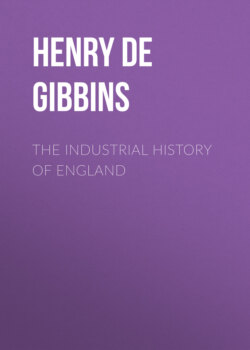Читать книгу The Industrial History of England - Henry de Beltgens Gibbins - Страница 11
На сайте Литреса книга снята с продажи.
§ 4. The inhabitants of the manors
Оглавление—Besides the lord himself (whether king, noble, or sub-tenant), with his personal retainers, and generally a parish priest or some monks, there were three other classes of inhabitants. (1) First came the villeins, who formed 38 per cent. of the whole population recorded in Domesday, and who held their land in virgates, a virgate being some thirty acres of arable land, scattered of course in plots (cf. p. 20) among the common fields of the manor, together with a house and messuage in the village. These villeins were often called virgarii (or yardlings), from this term virgate. (2) Below the villeins came the cottars, or bordars, a class distinct from and below the former, who probably held {13} only some five or ten acres of land and a cottage, and did not even possess a plough, much less a team of oxen, apiece, but had to combine among themselves for the purpose of ploughing. They form 32 per cent. of the Domesday population. Finally came (3) the slaves, who were much smaller in numbers than is commonly supposed, forming only 9 per cent. of the Domesday population. Less than a century after the Conquest these disappear and merge into the cottars.
